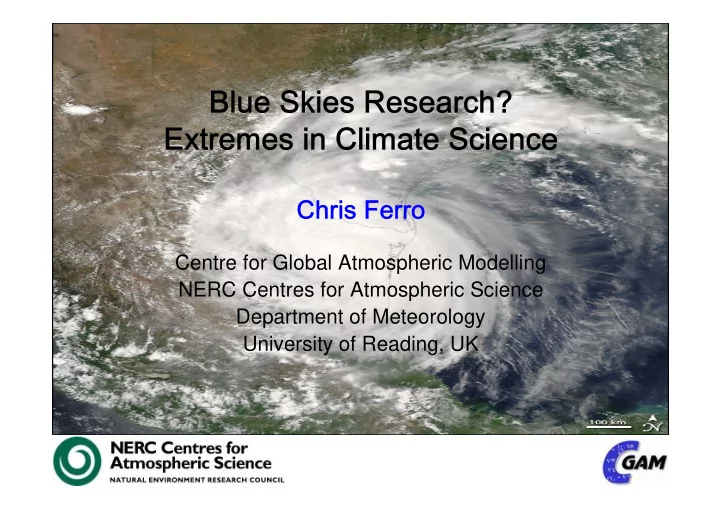

Centre for Global Atmospheric Modelling NERC Centres for Atmospheric Science Department of Meteorology University of Reading, UK
Monsoon Drought BBC NASA Hurricane Tornado NASA BBC
Dependent on many space and time scales Nonstationary on many space and time scales Large but limited datasets from many sources Computer models provide experimental tools
Describe risks of extreme events and their changes Understand processes related to extreme events Simulate extreme events in computer models Predict risks of future extreme events
Frequency, magnitude, location, timing, space-time evolution and extent Robust estimation, model diagnostics Exploit spatial dependence Explore high-dimensional dependence North Atlantic Oscillation Pattern (NOAA)
Small- and large-scale processes governing short- and long-term changes Improve predictability and climate models Derive extremes from well- simulated processes Statistical modelling tests Specific Humidity [0.1 g / kg] theories and constraints
Compare simulated and observed extremes Downscale simulations Effects of model resolution Model differences Extremal properties of observed and simulated daily rainfall through year
Global and regional effects of climate change Attribute changes to causes Combine information from multi-model ensembles Verify predictions Proportional increases in 10-winter return levels of daily rainfall from 1960 to 2070 assuming A2 emissions scenario
Important and challenging field Growing demand for statistical methods Need for new methods, software and collaboration www.met.rdg.ac.uk/~sws02caf c.a.t.ferro@reading.ac.uk
Recommend
More recommend